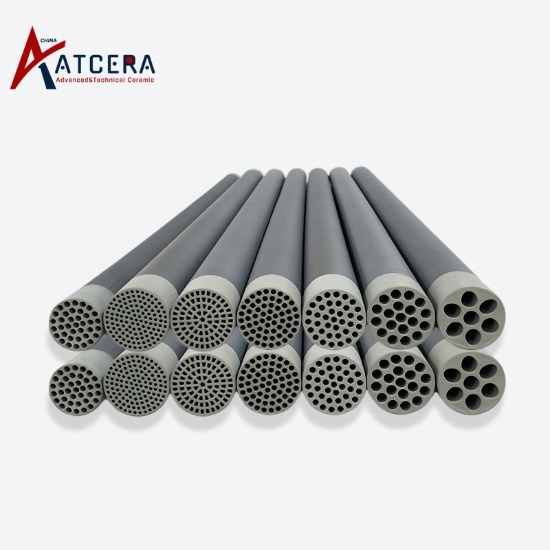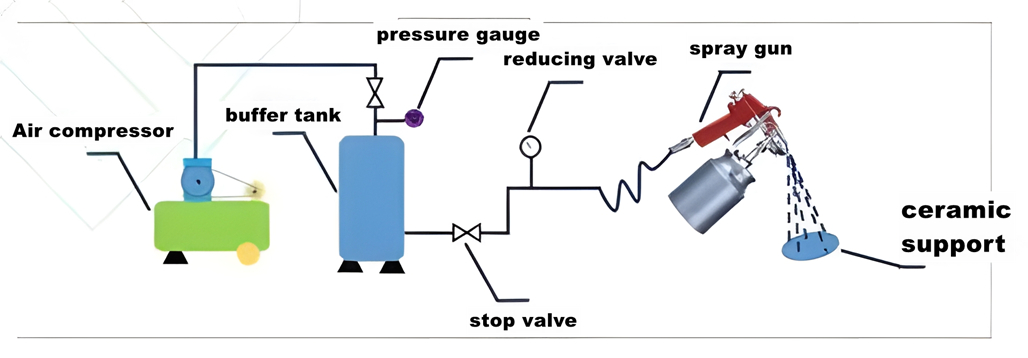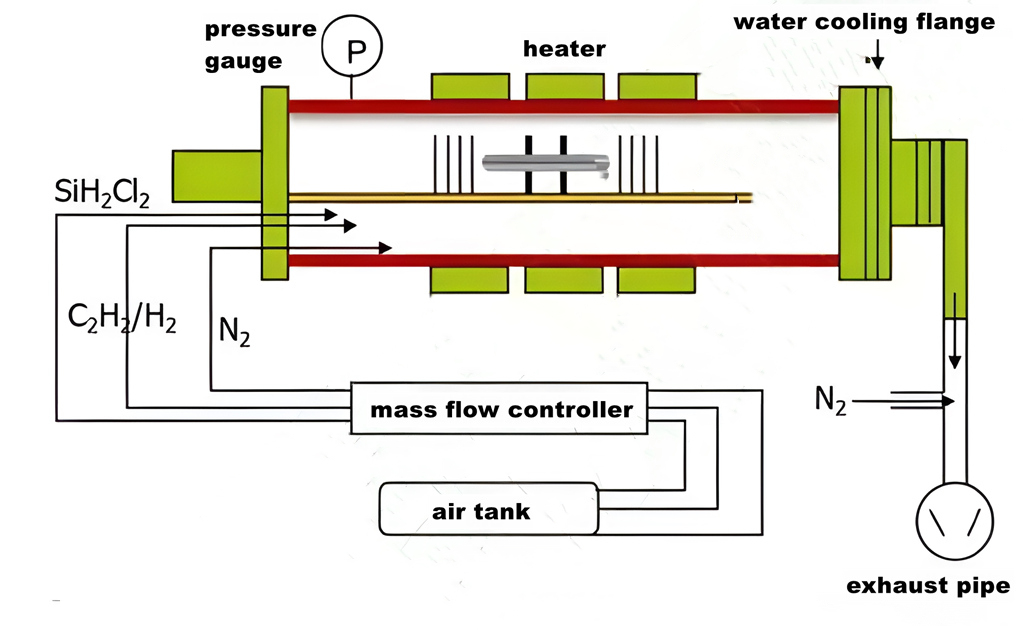жФўТђДУЃйсѓисЃфсѓ│сЃ│сѓФсЃ╝сЃљсѓцсЃЅУєюсЃЂсЃЦсЃ╝сЃќсѓњ сѓбсЃЌсЃфсѓ▒сЃ╝сѓисЃДсЃ│сЃЌсЃГсѓ╗сѓ╣ућесЂФТ║ќтѓЎсЂЎсѓІТќ╣Т│ЋсЂ»сђЂуЈЙтюесђЂуаћуЕХсЂ«сЃЏсЃЃсЃѕсѓ╣сЃЮсЃЃсЃѕсЂФсЂфсЂБсЂдсЂёсЂЙсЂЎсђѓсѓисЃфсѓ│сЃ│сѓФсЃ╝сЃљсѓцсЃЅУєюсЂ»СИђУѕгсЂФжЮът»ЙуД░ТДІжђасЂДсђЂТћ»ТїЂСйЊсђЂжЂиуД╗т▒цсђЂтѕєжЏбт▒цсЂДТДІТѕљсЂЋсѓїсЂдсЂёсЂЙсЂЎсђѓТ║ќтѓЎсЃЌсЃГсѓ╗сѓ╣сЂФсЂ»СИ╗сЂФсЃЊсЃгсЃЃсЃѕТѕљтйб№╝ѕТћ»ТїЂСйЊТѕљтйбсђЂУєюТѕљтйб№╝ЅсЂеуё╝ухљсЂїтљФсЂЙсѓїсђЂсЂЕсЂАсѓЅсѓѓУєюТѕљтйбТђДУЃйсЂФтцДсЂЇсЂфтй▒жЪ┐сѓњСИјсЂѕсЂЙсЂЎсђѓжЂЕтѕЄсЂфТ║ќтѓЎсЃЌсЃГсѓ╗сѓ╣сЂФсѓѕсѓісђЂсѓ╗сЃЕсЃЪсЃЃсѓ»УєюсЂ«т«їтЁеТђДсЂїтљЉСИісЂЌсђЂС║ђУБѓсђЂтцДсЂЇсЂфуЕ┤сЂфсЂЕсЂ«ТгажЎЦсѓњжў▓сЂљсЂЊсЂесЂїсЂДсЂЇсЂЙсЂЎсђѓУєют▒цсЂФсЂ»СИ╗сЂФ4сЂцсЂ«Т║ќтѓЎТќ╣Т│ЋсЂїсЂѓсѓісЂЙсЂЎсђѓ

РђІ
сЃЄсѓБсЃЃсЃЌсЃЌсЃФТ│Ћ
сЃЄсѓБсЃЃсЃЌсѓбсЃ│сЃЅсЃЌсЃФТ│ЋсЂ»сђЂСИ╗сЂФС╗ЦСИІсЂ«сЃЌсЃГсѓ╗сѓ╣сЂДТДІТѕљсЂЋсѓїсЂдсЂёсЂЙсЂЎсђѓсЂЙсЂџсђЂсѓ╗сЃЕсЃЪсЃЃсѓ»у▓њтГљсЂЙсЂЪсЂ»сЃЮсЃфсЃъсЃ╝тЅЇжДєСйЊсѓњТ░┤сЂЙсЂЪсЂ»ТюЅТЕЪТ║ХтфњсЂФтѕєТЋБсЂЋсЂЏсЂдтЮЄУ│фсЂДт«Ѕт«џсЂЌсЂЪУБйУєюТ║ХТХ▓сѓњтйбТѕљсЂЌсђЂсѓ│сЃ╝сЃєсѓБсЃ│сѓ░тЙїсђЂтцџтГћУ│фТћ»ТїЂСйЊсЂ«УАежЮбсЂФТ╣┐ТйцУєюсѓњтйбТѕљсЂЌсЂЙсЂЎсђѓсЂЊсЂ«Тќ╣Т│ЋсЂ«УБйУєютјЪуљєсЂФсЂ»сђЂсђїТ»Џу┤░у«АТ┐ЙжЂјсђЇсЂесђїУБйУєюсђЇсЂїсЂѓсѓісЂЙсЂЎсђѓТ»Џу┤░у«АТ┐ЙжЂјсЂ»сђЂС╣ЙуЄЦсЂЌсЂЪтцџтГћУ│фТћ»ТїЂСйЊсЂїУБйУєюТ║ХТХ▓сЂеТјЦУДдсЂЌсЂЪсЂесЂЇсЂФуЎ║ућЪсЂЌсЂЙсЂЎсђѓТ»Џу┤░у«АтіЏсЂФсѓѕсѓісђЂтѕєТЋБтфњсЂїТћ»ТїЂСйЊсЂФтЁЦсѓісђЂУБйУєюТ║ХТХ▓СИГсЂ«у▓њтГљсЂїТћ»ТїЂСйЊсЂ«УАежЮбсЂФуЋЎсЂЙсЂБсЂдУєюсѓњтйбТѕљсЂЌсЂЙсЂЎсђѓУБйУєюсЂ»сђЂТјЦУДдтЙїсЂФТћ»ТїЂСйЊсЂеУБйУєюТ║ХТХ▓сЂїтѕєжЏбсЂЎсѓІжќЊсЂФуЎ║ућЪсЂЌсђЂу▓ўТђДтіЏсЂ«СйюућесЂФсѓѕсѓіУБйУєюТ║ХТХ▓сЂїТћ»ТїЂСйЊсЂ«УАежЮбсЂФуЋЎсЂЙсЂБсЂдУєюсѓњтйбТѕљсЂЌсЂЙсЂЎсђѓУБйжђасЂісѓѕсЂ│ТюђжЂЕтїќтЙїсЂ«сѓ╗сЃЕсЃЪсЃЃсѓ»Уєюу«АсЂ» тєЇуЈЙТђДсЂїжФўсЂЈсђЂСИІТ░┤тЄдуљєсЂФтёфсѓїсЂЪті╣ТъюсѓњуЎ║ТЈ«сЂЌсЂЙсЂЎсђѓсЃЄсѓБсЃЃсЃЌсѓбсЃ│сЃЅсЃЌсЃФТ│ЋсЂ»сђЂТЊЇСйюсЂїу░АтЇўсЂДсѓесЃЇсЃФсѓ«сЃ╝ТХѕУ▓╗сЂїт░ЉсЂфсЂёсЂЪсѓЂсђЂТюђсѓѓт║ЃсЂЈСй┐ућесЂЋсѓїсЂдсЂёсѓІУєюУБйжђаТќ╣Т│ЋсЂ«1сЂцсЂДсЂЎсђѓ

сЃЄсѓБсЃЃсЃЌсѓбсЃ│сЃЅсЃЌсЃФТ│ЋсЂФсѓѕсѓІsicУєюсЂ«СйюУБйТЅІжаєтЏ│
тЎ┤жюДТќ╣Т│Ћ
Spraying method is to use the spray gun to atomize the dispersed membrane making liquid into small droplets, and then deposit on the surface of the support body to form a membrane layer. The main operating parameters of the spraying method include the distance between the spray gun and the support body, the spraying pressure and the spraying time. Compared with dip and pull method, spraying method has the significant advantage of reducing the surface tension of the membrane making liquid through atomization, which is conducive to reducing the infiltration of the membrane layer into the support body pores, and thus reducing the interface resistance between the support body and the membrane layer. The spraying method has the advantages of easy large-scale production, simple operation, high slurry utilization efficiency and easy adjustment of membrane thickness. However, at present, this method is only used for the preparation of microfiltration membranes, and it does not meet the preparation requirements of small pore size membranes such as ultrafiltration and nanofiltration.

Spraying device diagram
Chemical Vapor Deposition Method
Chemical vapor deposition (CVD) is a method to prepare ceramic membrane by chemical reaction of one or several gaseous elements or compounds on the surface of porous support. The ceramic membrane prepared by this method has the characteristics of small membrane pore size and relatively low preparation temperature. However, CVD membrane has the disadvantages of harsh conditions, cumbersome process, high energy consumption and low membrane flux. At present, CVD membrane is mostly used in gas separation field, and its application in other fields needs to be further expanded. Chemical vapor deposition technology can only be used with chip ceramic membrane, and it is difficult to uniformly deposit in the preparation process of tubular or multi-channel ceramic membrane.

Schematic diagram of a CVD system for SiC membrane deposition
Phase Transformation Method
уЏИтцЅТЈЏсЂесЂ»сђЂтцџжЄЈсЂ«сЃЮсЃфсЃъсЃ╝Т║ХТХ▓сѓњтљФсѓђсѓ╗сЃЕсЃЪсЃЃсѓ»сЃџсЃ╝сѓ╣сЃѕсѓњТ╣┐т╝ЈсЂЙсЂЪсЂ»С╣Йт╝ЈУфўт░јсЂФсѓѕсЂБсЂдТХ▓СйЊсЂІсѓЅтЏ║СйЊсЂФтцЅсЂѕсѓІсЂЊсЂесЂїсЂДсЂЇсѓІсЂЊсЂесѓњТёЈтЉ│сЂЌсђЂТ╣┐т╝ЈсЂісѓѕсЂ│С╣Йт╝ЈсЂесЂ»сђЂсЃЮсЃфсЃъсЃ╝Т║ХТХ▓сѓњжЮъТ║ХтфњтЄЮуИ«Тх┤сЂЙсЂЪсЂ»тцДТ░ЌсЂФсЂЋсѓЅсЂЎсЂЊсЂесѓњТёЈтЉ│сЂЌсЂЙсЂЎсђѓуЏИтцЅТЈЏсЃЌсЃГсѓ╗сѓ╣СИГсђЂсЃЮсЃфсЃъсЃ╝сЂ«тйбТЁІсЂ»сѓ╗сЃЕсЃЪсЃЃсѓ»УєюсЂ«у┤░тГћсЂесЂЌсЂдС┐ЮТїЂсЂЋсѓїсђЂжђџтИИсђЂТїЄуіХу┤░тГћсЂесѓ╣сЃЮсЃ│сѓИуіХу┤░тГћсЂФтѕєсЂІсѓїсЂдсЂісѓісђЂТ»ћУ╝ЃуџёСйјсЂётцџтГћт║дС┐ѓТЋ░сѓњТїЂсЂАсђЂсѓѕсѓіжФўсЂёсЃЋсЃЕсЃЃсѓ»сѓ╣сЂ«сѓ╗сЃЕсЃЪсЃЃсѓ»УєюсЂ«УБйжђасЂФтй╣уФІсЂАсЂЙсЂЎсђѓтЙЊТЮЦсЂ«сѓ╗сЃЕсЃЪсЃЃсѓ»УєюсЂ«тцџтГћт║дсЂ»25.95№╝Ёсђю47.64№╝ЁсЂДсЂѓсѓісђЂуЏИтцЅТЈЏТ│ЋсЂДУБйжђасЂЋсѓїсЂЪсѓ╗сЃЕсЃЪсЃЃсѓ»УєюсЂ«тцџтГћт║дсЂ»70№╝ЁС╗ЦСИісЂДсЂЎсђѓсЂЪсЂасЂЌсђЂсЂЊсЂ«Тќ╣Т│ЋсЂДУБйжђасЂЋсѓїсЂЪсѓхсЃ│сЃЌсЃФсЂ«ТЕЪТб░уџёт«Ѕт«џТђДсЂїСйјсЂЈсђЂУёєсЂёсЂЪсѓЂсђЂТЦГуЋїсЂДсЂ«т┐юућесЂїтѕХжЎљсЂЋсѓїсЂЙсЂЎсђѓуЏИтцЅТЈЏТ│ЋсЂ»сђЂжџјт▒цуџёсЂфтцџтГћУ│фТДІжђасѓњТїЂсЂцсѓ╗сЃЕсЃЪсЃЃсѓ»Уєюсѓњ1сЂцсЂ«сѓ╣сЃєсЃЃсЃЌсЂДУБйжђасЂЎсѓІті╣ТъюуџёсЂфТќ╣Т│ЋсЂДсЂѓсѓісђЂсѓ╗сЃЕсЃЪсЃЃсѓ»УєюсЂ«ТДІжђасѓњТюђжЂЕтїќсЂЌсђЂсѓ╗сЃЕсЃЪсЃЃсѓ»УєюсЂ«тцџтГћт║дсЂесЃЋсЃЕсЃЃсѓ»сѓ╣сѓњжФўсѓЂсѓІсЂЪсѓЂсЂ«т╣Ёт║ЃсЂёт┐юућет▒ЋТюЏсЂїсЂѓсѓісЂЙсЂЎсђѓ

УАежЮбТћ╣У│фтЅЇтЙїсЂ«SICСИГуЕ║у│ИУєюсЂ«у┤░тГћтЙётѕєтИЃсЂеSEMтЃЈ





























